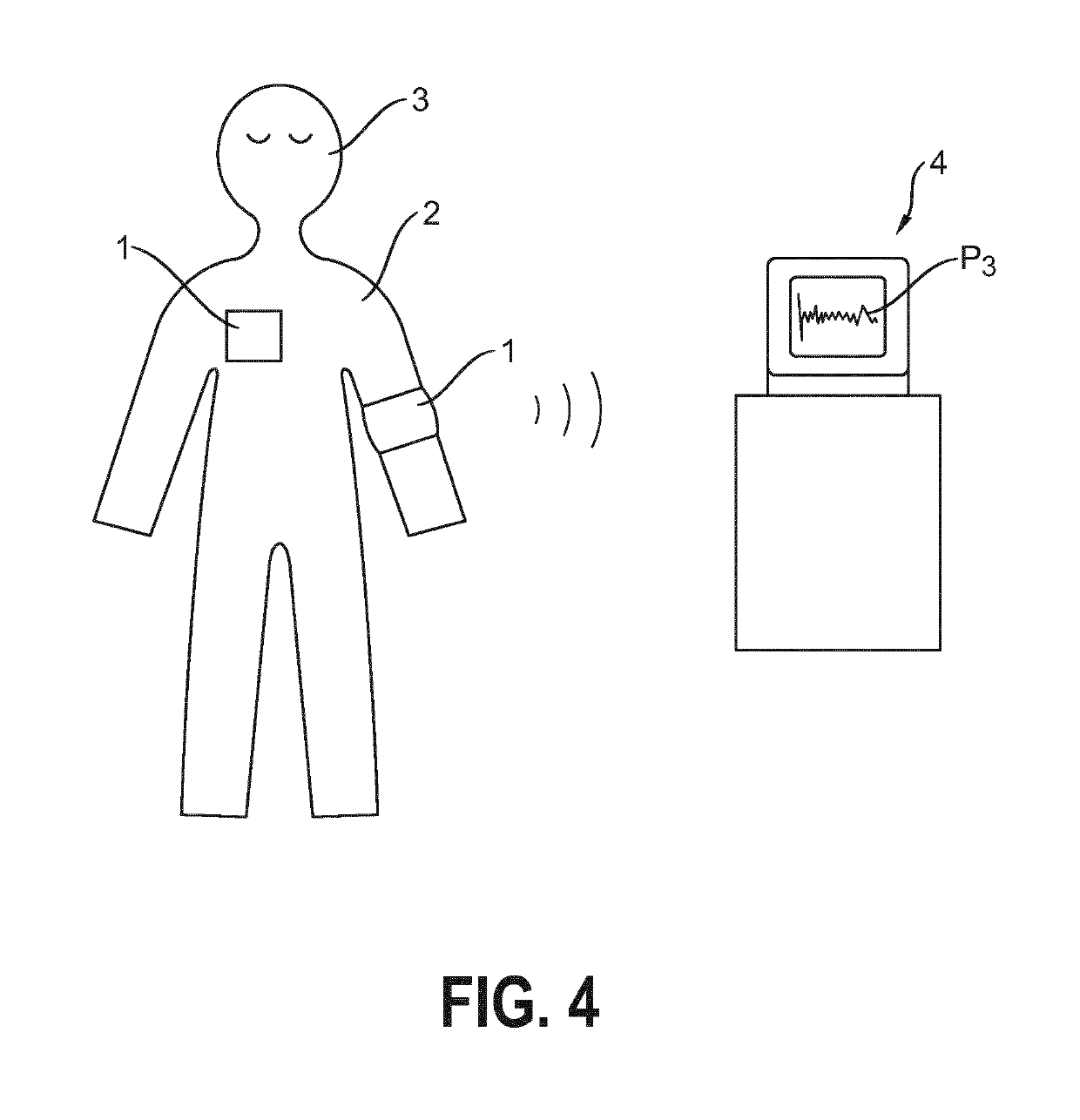Single heat flux sensor arrangement
a single heat flux and sensor technology, applied in the field of single heat flux sensor arrangement, can solve the problems of difficult integration of sensors in wearable sensor applications, difficult to and general discomfort of conscious patients, so as to improve accurately determine the core body temperature. , the effect of improving the accuracy of temperature measuremen
- Summary
- Abstract
- Description
- Claims
- Application Information
AI Technical Summary
Benefits of technology
Problems solved by technology
Method used
Image
Examples
Embodiment Construction
[0031]FIG. 1 shows an exemplary embodiment of the inventive single heat flow sensor arrangement 1. The sensor arrangement 1 comprises a sensor 10, which mainly consists of a thermal insulation layer 100 or pad 100. The pad 100 is applied to the skin 2 of a patient, and the sensor arrangement 1 will be used to determine the patient's core body temperature.
[0032]The sensor 10 has an inner thermistor S1 arranged at or close to an inner surface of the pad 100, and an outer thermistor S2 arranged at or close to an outer surface of the pad 100. An evaluation unit 11 is electrically connected to the thermistors and can evaluate the electrical signals that it receives in order to determine a temperature T1 at the inner region of the pad 100 and a temperature T2 at the outer region of the pad 100. To this end, the evaluation unit 11 can comprise a suitable microprocessor, FPGA, etc.
[0033]In this exemplary embodiment, the single heat flow sensor 1 has a memory module 111 for recording a tempe...
PUM
| Property | Measurement | Unit |
|---|---|---|
| core body temperature | aaaaa | aaaaa |
| thermally insulating | aaaaa | aaaaa |
| temperature | aaaaa | aaaaa |
Abstract
Description
Claims
Application Information
 Login to View More
Login to View More - R&D
- Intellectual Property
- Life Sciences
- Materials
- Tech Scout
- Unparalleled Data Quality
- Higher Quality Content
- 60% Fewer Hallucinations
Browse by: Latest US Patents, China's latest patents, Technical Efficacy Thesaurus, Application Domain, Technology Topic, Popular Technical Reports.
© 2025 PatSnap. All rights reserved.Legal|Privacy policy|Modern Slavery Act Transparency Statement|Sitemap|About US| Contact US: help@patsnap.com



